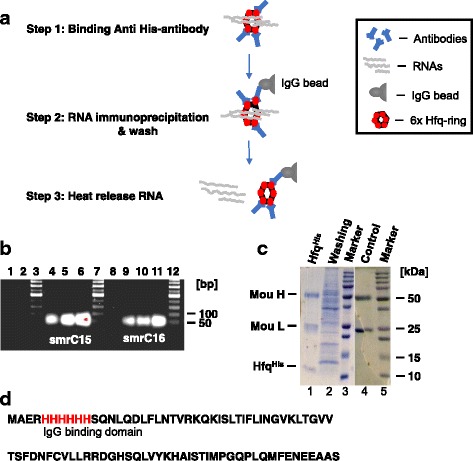Fig. 3.

Testing the p#5 method. a An overview of the method. Hfq forms a hexametric ring for action [37] b smrC15 (lanes, 4, 5, and 6) and smrC16 (lanes 9, 10, and 11) RNAs were detected by RT-PCR in the samples heat-released from HfqHis, but not in the negative control samples (lanes 1 and 2). PCR failed to amplify genomic DNA in RNA samples (lane 8) with primers In850F and In849R (Table 1, [31]). c An image of 12% SDS-PAGE gel stained with 1% Coomassie blue R-250. Lane 1: The immunoprecipitated HfqHis from p#5 nodule samples. H and L are heavy and light chains of the mouse anti-His antibody, respectively. Lane 2: Protein contents in the ‘first wash’ of the p#5 nodule sample. Lane 3 and 5: Protein molecular markers to calculate sample molecular weights. Lane 4: Precipitated antibody from the negative control. d The sequence and the position of the His-tag
